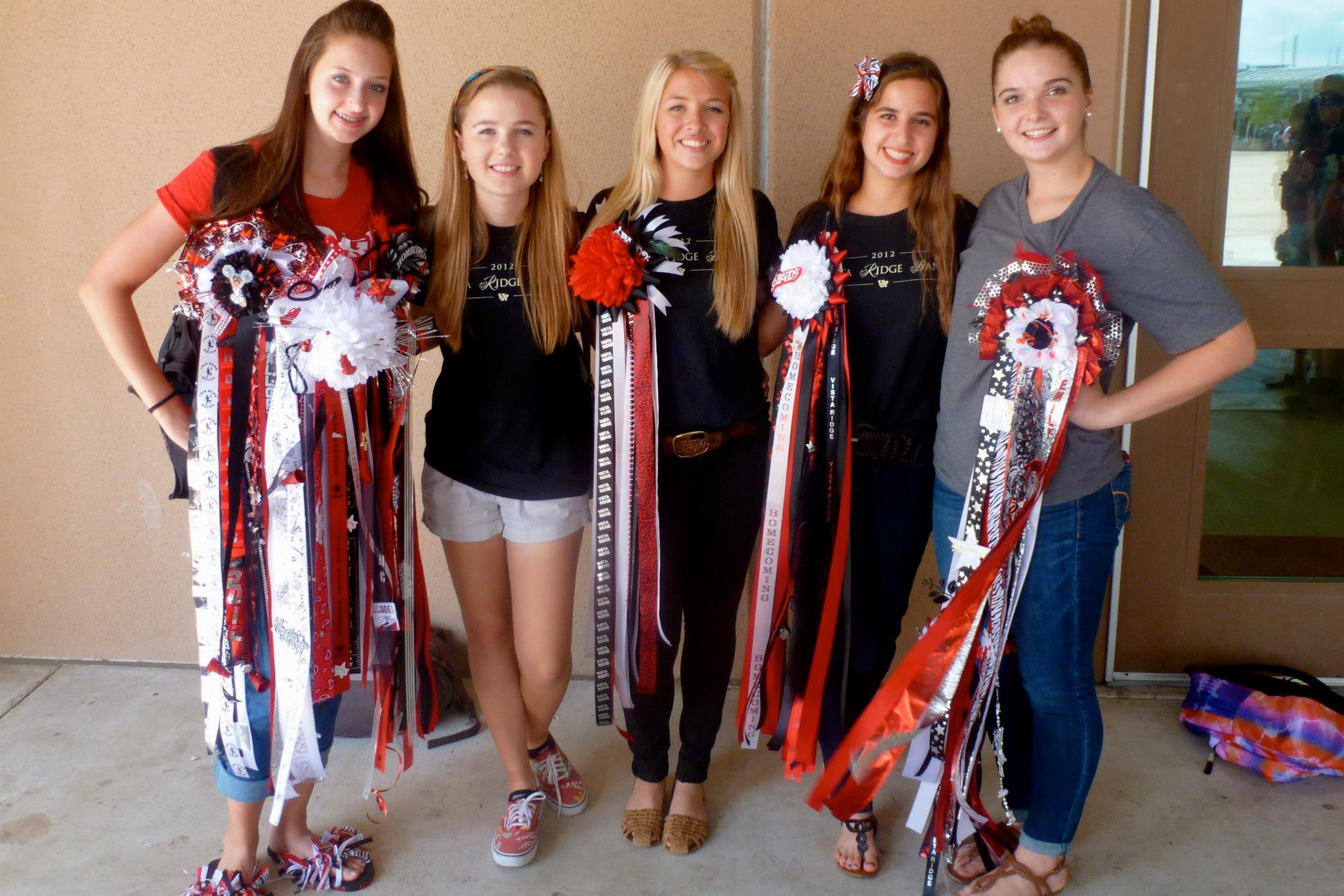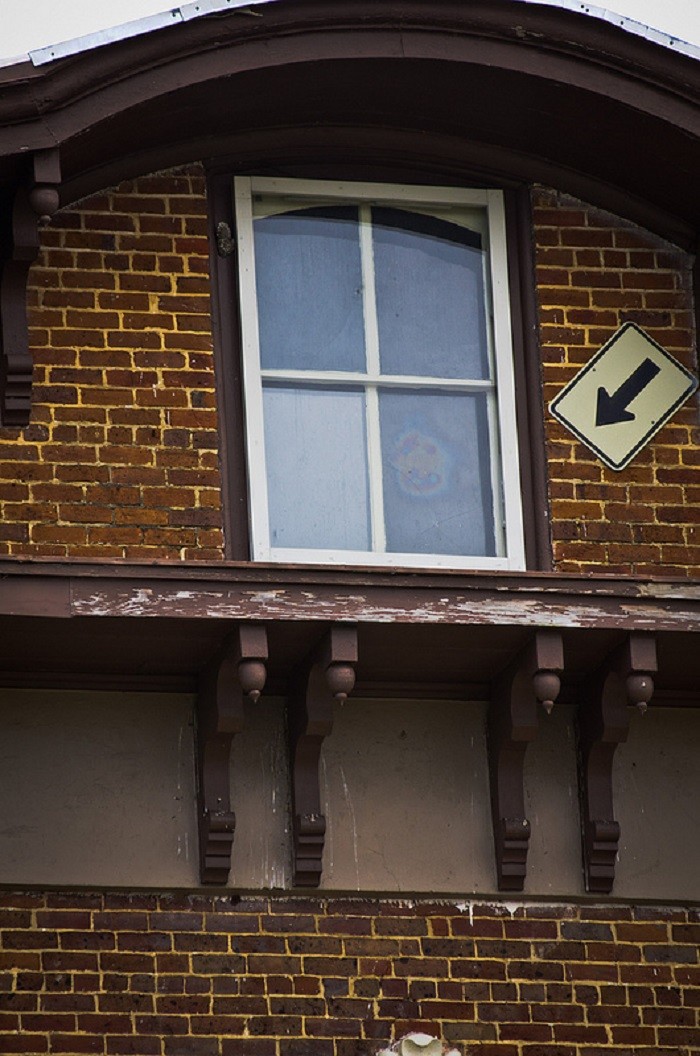Title: Homecoming Mums
Category: Clothing/Object
Informant: Rebecca Reinehr
Nationality: American, caucasian
Age: 21
Occupation: Student— Food Service Industry, Medical Group Volunteer, etc.
Residence: Austin, TX
Date of Collection: 4/14/18
Description:
Homecoming mums are worn by high school students and differ from person to person based on status, gender, relationship, etc. The practice is most common in Southern high schools- Texas in particular.
Homecoming mums are meant to be received as a gift from someone significant to the person wearing the object. An individual might receive a mum from the following persons: A friend, an organization, a parent/relative, a significant other (boy friend/girl friend), homecoming date, etc. A person is not limited by the number of mums they can give or receive and some people (women in particular) will often even make them for themselves if they want to be sure to have one for the day.
Typically, the age of the recipient and grade level will determine the size of their mum. Women’s mums are always larger, but Seniors mums are also usually larger than underclassman mums. Seniors mums are also sometimes made will all white ribbons, decorations, and flowers.
Mums are ornamental fake flowers that are usually around 6-8” in diameter and are attached to a back that has ribbons surrounding the flower on top, and dangling ribbons with decorations and letters. High schools in the area will have custom ribbons made with the high school logo or mascot as well. These ribbons and materials can be bought at craft stores in the region and even larger nation-wide craft stores will seasonally carry these items in their fall season. An example of stress that sell these items include, but are not limited to: Hobby Lobby, Michaels, Grocery Stores, etc.
Mums worn by women typically have ribbons extending to a yard in length and are worn via safety pin over the heart. Men’s mums are approximately half a yard in length and are worn on their arm attached to a ribbon garter. These objects will often include materials that make them distracting and challenging to wear all day. Attached items may include: bells, whistles, mini-LED lights, trinkets, stickers, etc. Sometimes a person may receive more than one mum and will either attempt to pin them all to their shirt, switch them out during the course of the day, or pin them to their backpacks.
Homecoming mums are worn on the day of homecoming to class and then later to the game. These flowers are also usually worn to a pep-rally that day before the homecoming game. Each mum is expected to be personalized with inside jokes, hobbies, or resemble the receiver’s/giver’s personality.
Mums may also be given by a parent’s club of an activity or sold in smaller forms by a student organization. Examples of smaller mums are: Finger mums, hair mums, children’s mums, etc.
Mums are usually kept and hung on bedroom walls by high school students. Women will often compare mums in class and use it as an almost competition to see who can get the most.
Mums can add up in expense quickly. While all of the items individually are fairly cheap— the main flower only costing around a dollar or two. But as is the slogan for Texas, “Everything’s bigger…” the more trinkets, ribbons, and bells that can be fit on are better and considered more impressive. Small, simple mums usually cost around $40 where larger and more intense mums can range in the $100-$200 range.
Context/Significance:
Mums are a very specific tradition, popular only in Texas (and parts of Oklahoma) and are huge, ginormous corsages. The NCAA recognizes the University of Missouri as the official place of birth of homecoming. In 1911, Mizzou athletic director Chester Brewer encouraged alumni to attend the game, and he gave them incentive to attend by having a huge celebration around the game that included parades and rallies.
At some point not too long after this first homecoming celebration in Missouri, the tradition of a boy giving a chrysanthemum to his homecoming date as a corsage was born in Texas. For decades, mums were simple, comprised of just a small flower with perhaps a few ribbons.
In the 1970s, homecoming mums became more elaborate and have continued to grow to the mammoth size they are today. Now they include a huge flower (albeit a silk flower has replaced the real chrysanthemum as the centerpiece), tons of large ribbons, charms, bows, bells, cowbells, stuffed animals, perhaps the high school mascot, and even LED lights in some cases! Even guys have their own version of the mum, called the garter – an elastic band worn around the upper arm that has the same features as the mum only on a much smaller scale.
Personal Thoughts:
Mums are also not only worn for homecoming. Mums are sometimes given as decorations for the home. Before coming to USC, I made a USC themed mum to hang on our common room door in my dorm room. Expecting mothers may also receive baby shower mums that will hang on the door of the delivery room. These are often themed for either a girl or boy and have baby trinkets and ribbons attached (sometimes even baby toys or pacifiers).
My cheerleading team sold mums the week of homecoming and provided a service for gentleman to order mums from our organization to be delivered the week of homecoming. At the game, each cheerleader also received a mum to wear on their leg for the game as athletes are not allowed to wear mums on the field. The football team will often wear a small carnation pinned to their uniform. The presented homecoming court will also remove their mums during the half-time ceremony.
Personally, I also just love them. Upon graduating high school, I tallied up a total of around 12 large mums and a few other smaller mums that I pinned to a bulletin board. They’re a fun way to remember that year’s homecoming celebration, friendships, and interests over the past four years.
Image:

Annotation:
For additional history behind homecoming mums, see:
https://www.themumshop.com/history-of-mums/
MLA Citation:
“HISTORY OF MUMS.” The Mum Shop, www.themumshop.com/history-of-mums/.


